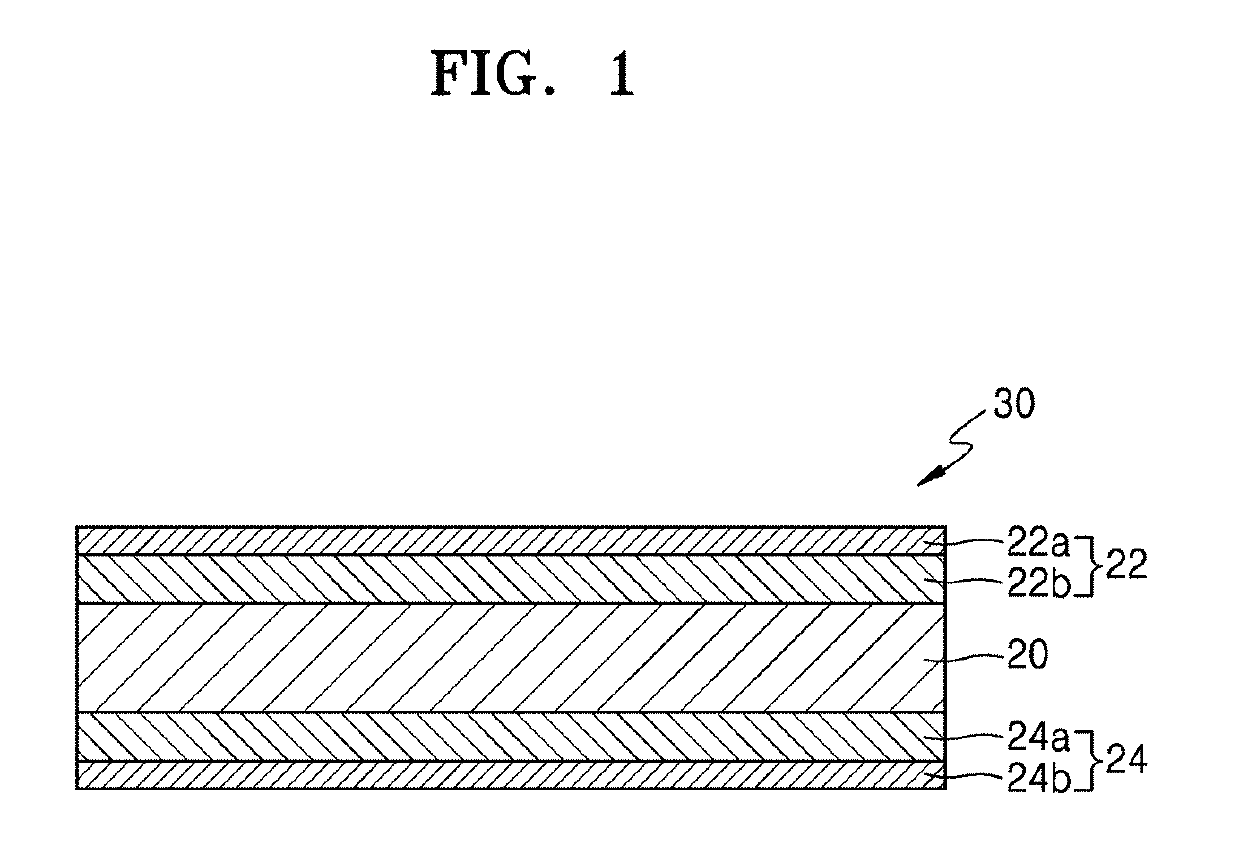Solid electrolyte and lithium battery including the same
a lithium battery and solid electrolyte technology, applied in batteries, electrochemical generators, alkali metal sulfides/polysulfides, etc., can solve the problems of lithium battery self-discharging and heating, lithium battery chemical instability, fire and explosion, etc., and achieve excellent chemical stability and high li ion conductivity
- Summary
- Abstract
- Description
- Claims
- Application Information
AI Technical Summary
Benefits of technology
Problems solved by technology
Method used
Image
Examples
example 1
1) Preparation of LiZnPS4
[0138]First, Li2S, P2S5, and ZnS, which were used as starting materials, were weighed and combined at a molar ratio of 1:1:2, and then mixed together. 2 g of the mixture was added to a 45 ml zirconia (ZrO2) container, and zirconia balls were added thereto. The mixture was subjected to a planetary ball milling process for about 16 hours and 40 minutes at a rotation speed of about 400 rpm. The resulting intermediates were sealed within a vacuum-treated quartz tube, and then, subjected to heat treatment at a temperature of about 290° C. for about 12 hours, and a cooling process to room temperature, thereby obtaining the resulting product. Afterwards, X-ray diffraction (XRD) spectroscopy was performed to measure the purity of the resulting product.
[0139]Additional products were also prepared in the same manner as in the method described above, except the temperature at which the heat treatment was performed at 380° C. or 450° C. Then, XRD spectroscopy was also ...
examples 2 to 9
[0143]Solid electrolyte materials each having a composition Li1+2xZn1−xPS4, in which x=0.05, 0.125, 0.25, 0.375, 0.5, 0.625, 0.8, 0.9 (Examples 2 to 9, respectively) were prepared in the same manner as in Example 1, except that the mixed ratio of LiZnPS4 and amorphous Li3PS4 was changed.
example 10
[0162]LiNi0.5Mn0.3Co0.2O2(NCM) as a positive active material, Li4Ti5O12 (LTO) as a negative active material, and carbon nanofiber (CNF) as a conductive material were prepared. The solid electrolyte (Li2.25Zn0.375PS4) prepared according to Example 7, a positive or negative active material, and a conductive material (e.g., CNF) were mixed at a weight ratio of about 35:60:5 weight %, thereby preparing positive and negative cladding metals. A positive cladding metal, a solid electrolyte, and a negative cladding metal were stacked at amounts of 20 mg / 150 mg / 25 mg, and then, compressed by a pressure of about 3 tons / cm2, thereby obtaining a test battery.
PUM
| Property | Measurement | Unit |
|---|---|---|
| temperature | aaaaa | aaaaa |
| temperature | aaaaa | aaaaa |
| voltages | aaaaa | aaaaa |
Abstract
Description
Claims
Application Information
 Login to View More
Login to View More - R&D
- Intellectual Property
- Life Sciences
- Materials
- Tech Scout
- Unparalleled Data Quality
- Higher Quality Content
- 60% Fewer Hallucinations
Browse by: Latest US Patents, China's latest patents, Technical Efficacy Thesaurus, Application Domain, Technology Topic, Popular Technical Reports.
© 2025 PatSnap. All rights reserved.Legal|Privacy policy|Modern Slavery Act Transparency Statement|Sitemap|About US| Contact US: help@patsnap.com



